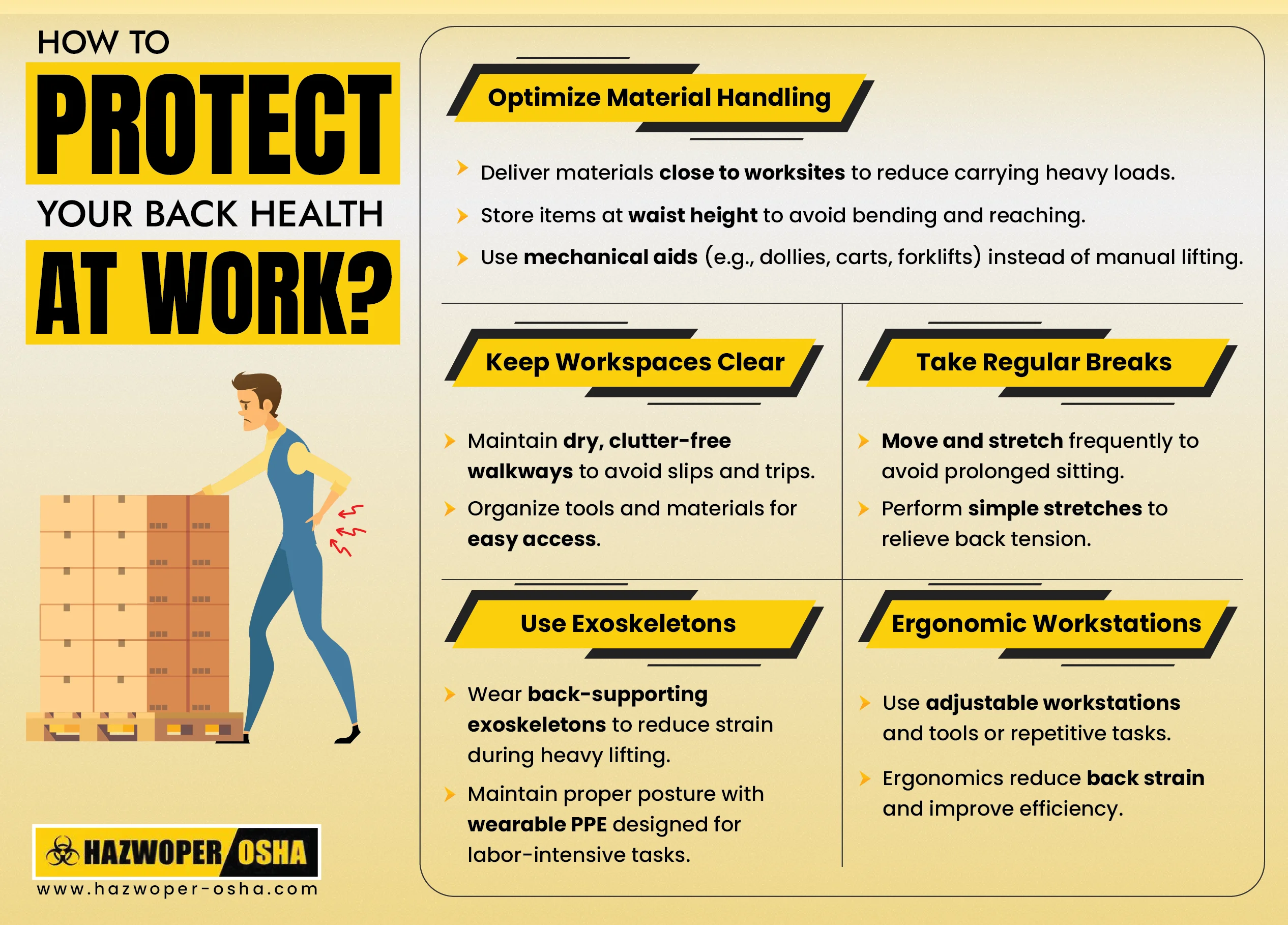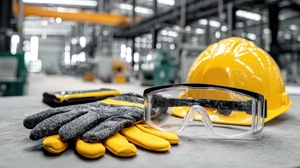The Long-Term Impact of Back Injuries and How Training Can Prevent Them

Introduction:
At workplaces, back injuries are one of the biggest health concerns for employees that also affect organizational productivity. Due to back pain, more than 83 million workdays are lost annually in the U.S., the biggest cause of missed work. What is more shocking is that almost 40% of all work-related musculoskeletal disorders occur due to back-related injuries, with more than 1 million workers getting injured each year. Back injuries lead to physical discomfort and pain but cause a massive economic burden in U.S. industries, around $635 billion per year in lost productivity and medical expenses. Back-related musculoskeletal disorders are one of the most common and disabling conditions in America, impacting 39% of adults at some point in their lives. This blog will explain in detail how back injuries impact employees in the long run and how effective training can prevent them. Remember, adhering to back safety protocols is not only about the health of your employees but a major investment in the future of the company.
Common Types of Back Injuries at Workplaces
Back injuries at the workplace differ in nature due to the activities and conditions employees face regularly. In heavy industries such as those involving heavy lifting, awkward postures, and repetitive motions, back injuries are quite common. The following are the most common types of back injuries:
- Strains and sprains happen due to muscles and ligaments in the back being overstretched or getting turned because of heavy lifting practices or overexertion.
- Another serious injury is herniated discs, occurring due to soft tissues between spinal vertebrae being damaged, causing numbness, pain, and weakness.
- Back injuries also occur due to fractures and compression injuries caused by slips, falls, and accidents caused by heavy machinery.
- Desk jobs such as workers working in assembly lines aren't immune even, chronic back pain from poor posture and no ergonomics support.
All these types of injuries are a major concern that highlights the importance of workplace ergonomics and safety training for employees in all industries.
What Causes Back Injuries in the Workplace?
In various industries, back injuries occur due to different reasons and causes. The leading contributor to back injuries is improper lifting techniques when workers lift heavy or awkward objects without keeping a proper posture and putting extensive strain on their backs.
Frequent bending, twisting, and lifting of lighter loads and types of repetitive motions cause chronic pain and injuries over time. Another major cause is inactivity, especially for those who work in desk jobs such as assembly lines. Poor posture with extended sitting periods weakens the back muscles and strengthens the risk of injury.
Back injuries are also caused by awkward postures, such as reaching for items or working in confined spaces, which can put immense stress on the back.
Last but not least, psychosocial factors such as minimum support from supervisors, and high job demands also play a role in the physical strain and mental stress, contributing towards the likelihood of back injuries. The employer must address the causes of back injuries effectively through proper training and ergonomics practices to ensure a safer work environment.
How Long-Term Back Injuries Impact the Employees.
Long-term back injuries can take a toll on the employees not only physically, but psychologically and economically. The following are the various ways back injuries affect employees.
Physical Consequences:
Chronic discomfort, limited mobility, and increased susceptibility all result from chronic back pain. Back injuries mostly lead to a cycle of pain that reduces daily activities and hampers the overall quality of life.
As Global Burden of Disease reports lower back pain is the top cause of global disability as compared to any other condition, affecting almost 1 in 10 people globally.
Psychological Effects:
A significant emotional toll is faced by employees suffering from chronic back pain. Individuals coping the back pain are twice as likely to suffer from mental health issues such as depression and anxiety. Constantly struggling with the pain can cause the sinking of self-worth and heightened stress levels, developing a vicious cycle where psychological anguish even exacerbates the physical symptoms as well.
Financial Losses:
A chronic back injury also leads to staggering financial implications. In the U.S., they cause over $635 billion per year in healthcare costs and lost productivity. Employees also suffer from additional medical expenses, the possibility of losing their jobs, and reduced earning capacity as they are unable to perform to their best and maintain consistent employment.
The economic strain not only distresses the workers but also affects employers, who have higher insurance premiums and less workforce efficiency. Understanding these varied impacts pushes the need for preventive measures and effective training programs in the workplace.
How to Protect Your Back-Health at Workplace?
Keeping good back health in industrial workplaces is a must to ensure overall well-being and productivity. These are some effective tips to help prevent back injuries:
1. Optimize Material Handling:
Ensure the required materials are delivered close to the worksite to reduce the need to carry heavy loads. Keep materials stored at waist height whenever possible to reduce bending and the need for reaching. Instead of relying on manual lifting, only use mechanical aids like dollies, carts, and forklifts to transport heavy items.
2. Keep Your Workspaces Clear:
The walkways must be maintained and dry in the construction industry to avoid slips and trips that cause back injuries. Make sure the tools and materials are organized and accessible easily.
3. Take Regular Breaks:
Take regular breaks and move around and stretch. Fatigue and increased risk of injuries are caused by prolonged sitting. Do simple stretching exercises to soften the tension in the back muscles.
4. Use Exoskeletons:
Using PPE, specifically exoskeletons, can be a game-changer to prevent back injuries. Workers can lift heavy loads and reduce strain on the back muscles and spine by using these wearable devices. By offering additional support, exoskeletons help workers to maintain proper posture while doing labor-intensive tasks.
5. Ergonomic Workstations:
Workers should use adjustable workstations or tools for tasks that require standing for extended periods or being in awkward positions. An adjusted ergonomic station helps to reduce back strain during repetitive tasks. Read our detailed blog post on Tips to Enhance Ergonomics in Assembly Lines for Maximum Efficiency and Worker Safety here.
By adopting these strategies, employers can develop safer and better work environments that support back health, boost productivity, and reduce injury rates.

How Does Training Prevent Back Injuries?
Employees with proper ergonomics training can keep their musculoskeletal health in top shape. Ergonomics trainings cover body mechanics, proper lifting techniques, and keeping proper posture to reduce strain while working. Also, back safety training, by implement proper Ergonomic practices and train the employees accordingly.
Conclusion:
Back injuries are no joke, but safety tips and proper ergonomics training can be a lifesaver for employees. Organizations can also foster a safe working culture by implementing effective training programs for the employees, providing them with essential PPE, and strategic material handling during work to reduce the physical strain to zero. Innovative solutions like exoskeletons further help the workers by making physically demanding tasks a piece of cake. In the future, prioritizing safety culture will not only protect the employees but build a more resilient and efficient workforce. Prioritizing health is not a checklist tick box; it is a commitment to the health of every employee and the company.
References:
Workfit, February 13, 2024, 3 Statistics on Back Injuries in the Workplace Every Boss Should Know, https://www.work-fit.com/blog/3-statistics-on-back-injuries-in-the-workplace-every-boss-should-know

 EN |
EN |  ES
ES




























































































































